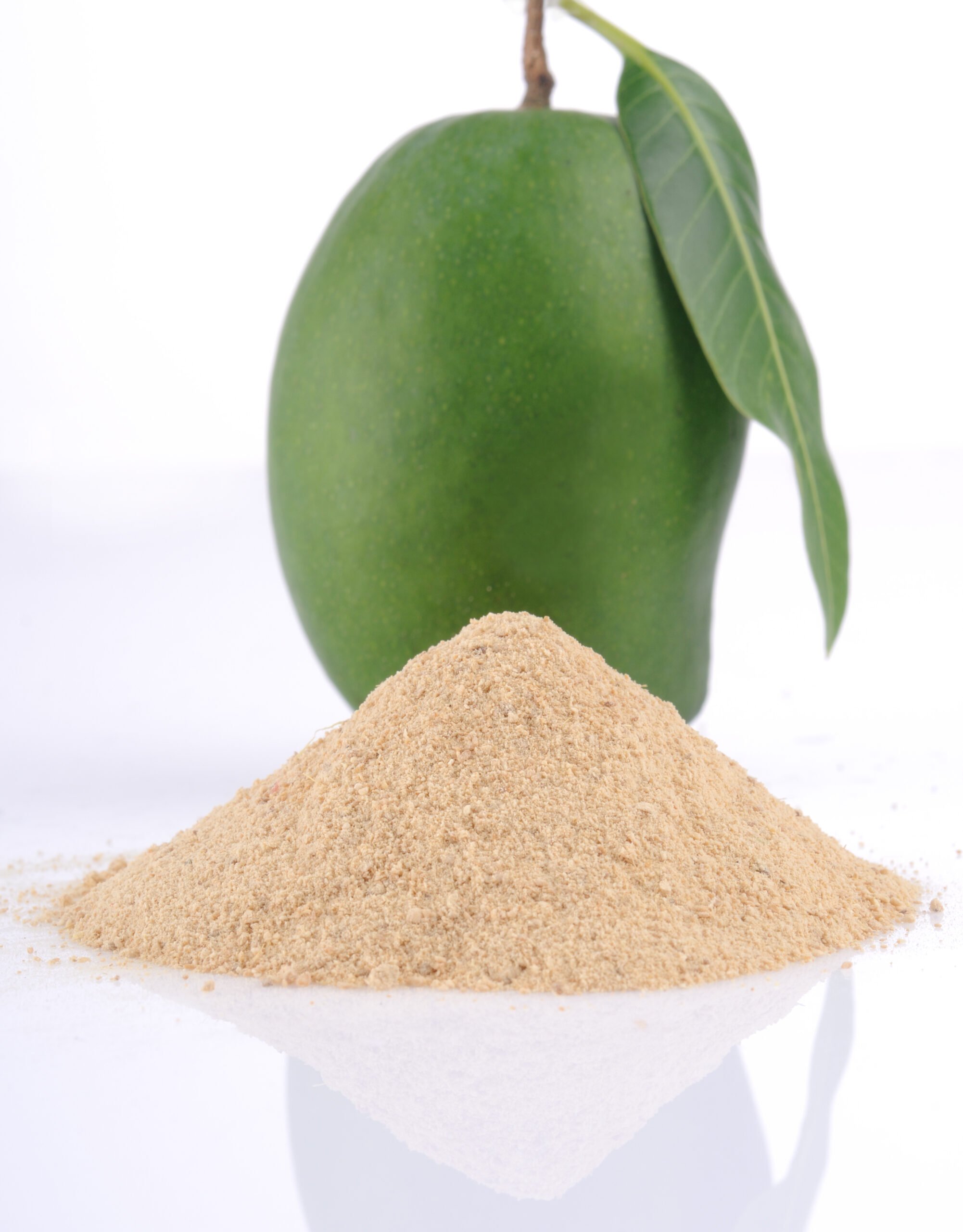
It may not look like much — just a pale brown powder in a jar — but amchur has the power to spark a dish to life with just a pinch. Made from dried unripe mangoes, this tangy spice has been brightening up chutneys, snacks, and curries for generations.
Whether you’re trying to add a citrusy edge to your dals or revive the flavor of a slow-cooked stew, amchur brings that sharp, sunny kick without needing lemons or vinegar. It’s the kind of spice that quietly waits in your pantry... until your food needs waking up.
What Exactly is Amchur?
Amchur, sometimes spelled amchoor, is a spice powder made from unripe green mangoes.
Its name comes from two Hindi words — “aam” meaning mango and “choor” meaning powder. Amchur has been used in Indian cooking for centuries, especially in regions where fresh mangoes aren't available year-round.
Today, it’s a staple in many spice cabinets and often used to add a unique dimension to everything from curries to street snacks and even spice blends.
How It’s Made
Amchur starts with unripe green mangoes — firm, sour, and harvested well before they have a chance to ripen. The mangoes are washed, peeled, and sliced thinly before being sun-dried for several days until they become leathery and brittle.
Once fully dried, the slices are either sold as-is or ground into a fine, pale brown powder — which is what most people recognize as amchur. This drying process preserves the mango’s tartness while making it shelf-stable for months.
It’s a simple, age-old method that turns a seasonal fruit into a year-round flavor booster — no additives or processing required.
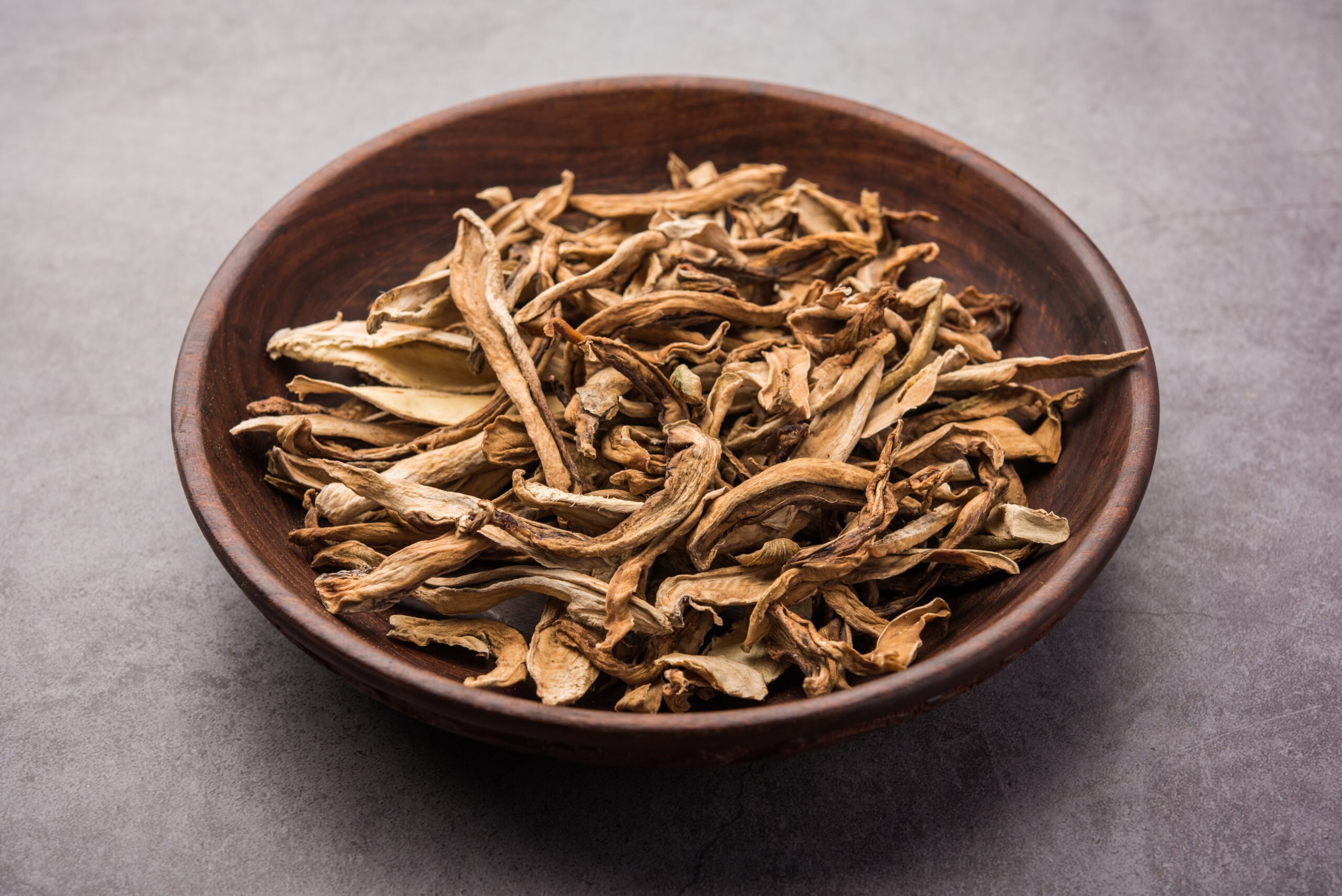
What It Tastes Like?
Amchur has a bright, tangy flavor that hits somewhere between green apple and lemon — sharp, sour, and slightly fruity. It doesn’t bring heat or spice, but it does add a clean, citrusy zing that wakes up the palate.
There’s also a subtle sweetness in the background, thanks to the natural sugars in mango, but the sourness takes center stage. It’s the kind of flavor that can cut through richness, lift up mild dishes, and make even a simple snack taste more vibrant.
Culinary Uses Around the World
Amchur may have its roots in Indian cooking, but its tangy, citrus-like flavor is making its way into kitchens across different regions — both traditional and experimental.
-
India:
A pantry essential for dry vegetable curries, dals, chaats, chutneys, and spice blends like chaat masala. It’s often used when dishes need acidity without added liquid. -
Pakistan and Bangladesh:
Common in lentil dishes, meat marinades, and crispy snacks like pakoras, where it brings a layer of sharpness and balance. -
Nepal:
Occasionally added to tangy pickles and spice pastes, especially in home-style cooking. -
Afghanistan:
While not traditionally widespread, some regional cooks blend amchur into yogurt-based marinades or dry rubs for grilled meats. -
Middle Eastern fusion cuisine:
Used as a citrus substitute in za’atar-style spice mixes, tahini dips, and salad dressings for a warm, fruity tang. -
East Africa (Indian diaspora communities):
Amchur appears in Indo-African recipes — added to stews, fritters, or street snacks influenced by Indian flavors. -
United Kingdom & North America:
Gaining traction in modern spice blends, vegan recipes, and gluten-free cooking where lemon isn’t ideal. It’s also a favorite in DIY spice rubs and citrus-free condiments.
Smart Ways to Use Amchur
Amchur is all about balance — it brings acidity without liquid, tang without heat, and depth without overpowering. Used thoughtfully, it can take your dish from flat to flavorful with just a pinch.
Here’s how to make the most of it in your cooking:
-
Use it in dry dishes:
It shines in recipes where you don’t want added moisture — think dry sabzis, stir-fried potatoes, or spiced nuts. -
Add it near the end:
Amchur loses some of its punch when overcooked. Sprinkle it in during the final stages of cooking or just before serving. -
Balance it with warm spices:
It pairs beautifully with cumin, coriander, black salt, and chili powder — often found together in chaat masala and street food spice mixes. -
Don’t overdo it:
A little goes a long way. Too much can make your dish taste overly sour or slightly metallic.
It’s one of those spices that quietly builds flavor without stealing the spotlight — subtle, sharp, and surprisingly versatile.
Surprising Uses Beyond the Basics
Amchur isn’t just a finishing touch — it can be the secret ingredient that upgrades everyday favorites in ways you might not expect.
-
Tangy rim for drinks:
Mix amchur with salt and chili powder to rim glasses for lemonade, jaljeera, or even mocktails. It gives a fun, desi-style edge to refreshing drinks. -
Flavor enhancer for sandwich spreads:
A small pinch mixed into mayo, mustard, or cream cheese can transform basic spreads with a citrusy lift. -
In fusion snacks like amchur fries:
Toss French fries or potato wedges in amchur, smoked paprika, and salt for a sharp, Indian-inspired twist. -
Hidden layer in baked goods:
A tiny bit in savory scones, crackers, or flatbreads can create a tangy note that makes people ask, “What’s in this?” -
Garnish upgrade:
Dust amchur over deviled eggs, roasted corn, or avocado toast to turn simple items into bold-flavored bites.
Flavor Pairings
Amchur brings a bright, sour note that pairs well with bold, warm, and earthy flavors. When used right, it enhances depth and adds contrast without clashing.
-
Warm spices:
It works beautifully alongside cumin, coriander, fennel, black pepper, and chili powder — often seen in spice blends like chaat masala. -
Root vegetables:
Adds a lively twist to potatoes, sweet potatoes, carrots, and beets, especially when roasted or pan-fried. -
Pulses and legumes:
Amchur lifts the earthiness of lentils, chickpeas, and kidney beans, making them taste lighter and more vibrant. -
Herbs and aromatics:
Complements garlic, ginger, mint, and cilantro — offering a nice balance between sharpness and freshness. -
Tangy and salty elements:
Surprisingly, it plays well with tamarind, yogurt, and black salt, amplifying the tang without overwhelming the palate.
Amchur Substitutes
If you're out of amchur, don’t worry — there are a few common ingredients that can step in and deliver a similar tangy effect, though the flavor won’t be exactly the same.
-
Lemon juice or lime juice:
Great for adding acidity, especially in wet dishes. Use in moderation to avoid changing the texture or consistency. -
Tamarind paste:
Has a deeper, fruitier sourness. Best for stews, chutneys, or marinades where a bold tang is welcome. -
Sumac:
A Middle Eastern spice with a dry, citrusy note. Works well in rubs, salads, and dry mixes as a dry alternative. -
Citric acid (a pinch):
A pantry hack for achieving sharp sourness in dry spice blends or snacks — just go easy on the quantity. -
Pomegranate powder (anardana):
Slightly sweeter but still tangy. A good fit for North Indian recipes or chutneys where a fruity note works.
Each of these substitutes brings its own character, so choose based on the texture and taste you’re aiming for — and when in doubt, start small and adjust to taste.
How to Store It Right
Amchur may be dry, but it still needs a little care to stay fresh and flavorful.
-
Use an airtight container:
Keep it in a tightly sealed glass jar or spice tin to protect it from moisture and air exposure. -
Store in a cool, dark place:
Heat, light, and humidity can dull its tanginess over time — a kitchen cabinet away from the stove is ideal. -
Avoid the fridge:
Storing it in the refrigerator can cause clumping and reduce its shelf life. -
Check its aroma:
If it starts to smell faint, dusty, or loses its sharpness, it’s time to refresh your stock.
Properly stored, amchur can retain its punch for up to a year — ready to add that quick spark whenever your food needs a lift.
Nutritional Value (Per Tablespoon or Gram)
Amchur is typically used in small amounts, but it still brings a touch of natural nutrition to your plate — especially from the dried mango it’s made from.
Per 1 tablespoon (approx. 6 grams):
-
Calories: ~20 kcal
-
Carbohydrates: ~5 grams
-
Fiber: ~1.5 grams
-
Vitamin C: Small amounts may remain after drying
-
Iron and Calcium: Trace minerals present in minimal quantities
-
Fat and Protein: Negligible
Because it’s used more for flavor than bulk, you won’t get large amounts of nutrients — but it does offer a clean, natural way to add brightness without extra calories or additives.
Health Benefits of Amchur
Amchur may be used in small amounts, but it can still offer a few health perks thanks to its natural fruit base and antioxidant content.
May Support Digestive Health
Traditionally, amchur has been used to help relieve indigestion and bloating. Its natural acidity may stimulate digestive enzymes and support smoother digestion (Source).
Can Help Boost Iron Absorption
The small amount of vitamin C found in dried mango may help the body absorb iron more effectively from plant-based foods (Source).
May Promote Better Skin Health
The antioxidants and trace vitamins in amchur may help reduce oxidative stress, which is linked to signs of premature aging (Source).
Can Help Manage Blood Sugar
Some early studies suggest that nutrients, fiber, and antioxidants in mango may support better blood sugar balance, though this benefit is more likely with larger quantities than what’s used in seasoning (Source).
As with most spices, amchur should be enjoyed in moderation. It adds flavor first — and any health benefits are a gentle bonus.
Potential Health Risks of Amchur
Amchur is generally safe when used in small culinary amounts, but there are a few things to be aware of — especially for people with sensitivities or underlying conditions.
May Cause Reactions in People with Mango Allergy
Since amchur is made from unripe mangoes, those with mango allergies may experience mild to moderate allergic reactions when consuming it (Source).
May Cause Throat Irritation in Sensitive Individuals
In rare cases, the concentrated sourness of amchur may cause a slight burning sensation or dryness in the throat, especially if consumed in excess or without being properly mixed into food (Source).
Used in normal cooking quantities, amchur is considered safe. But as always, if you have health concerns or dietary restrictions, it’s wise to consult with a healthcare professional.
Final Thoughts
Amchur may come from something as simple as dried mango, but it adds a brightness that stands out. It slips easily into classic dishes or new experiments, bringing a tang that lifts flavors without overpowering them.
It’s sharp, versatile, and easy to keep on hand — the kind of spice you’ll reach for more often than you expect. Keep a jar in the cupboard, and you’ll always have a quick way to bring a little spark to your cooking.
FAQs
Is amchur the same as mango powder?
Yes — amchur is mango powder. It’s made from dried unripe mango slices that are ground into a fine powder.
Can I use amchur in place of lemon juice?
In some recipes, yes. It offers similar tanginess without adding liquid, making it ideal for dry dishes or spice blends.
Is amchur spicy?
No, amchur isn’t spicy. It’s tangy and sour, with a slightly fruity undertone — perfect for balancing bold flavors.
Where can I buy amchur?
You can find it at Indian or South Asian grocery stores, as well as online spice retailers. Some international supermarkets carry it too.
How long does amchur last?
If stored in an airtight container away from heat and moisture, amchur can stay fresh for up to a year — though its flavor fades over time.
Learn More About Amchur (Dried Mango Powder)
Wikipedia — Amchoor
This article explains what amchoor is and how it is used mostly in Indian cuisine as a tangy, moisture-free seasoning and sometimes meat tenderizer. It also covers how it’s made (harvesting, drying, grinding) and outlines its culinary roles from chutneys and curries to chaat masala and marinades.
JK Cart — Amchur (Dry Mango): Benefits & How to Use It for Cooking
This article highlights the health benefits and cooking uses of amchur (dry mango powder)—emphasizing its vitamin-rich, antioxidant nature and traditional roles in aiding digestion, boosting iron, supporting heart and skin health, detoxifying the body, and enhancing flavor in a variety of dishes.


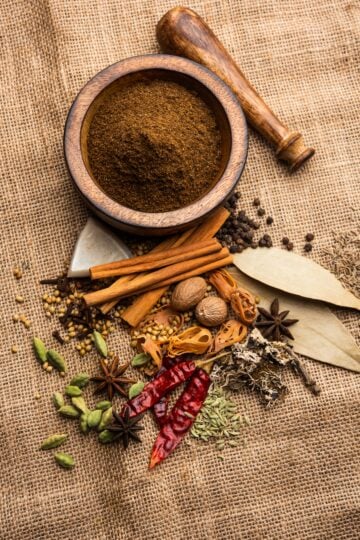
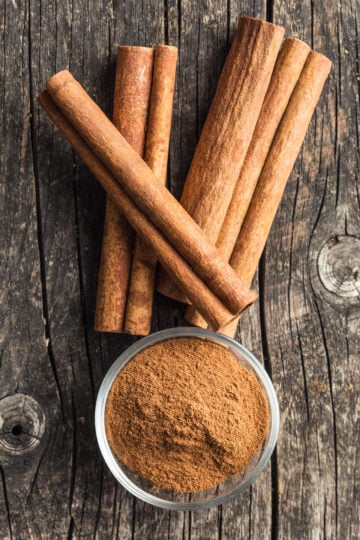
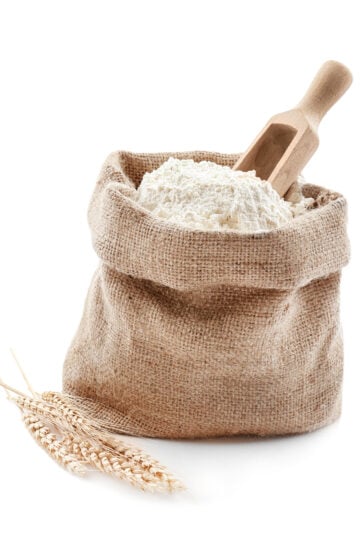
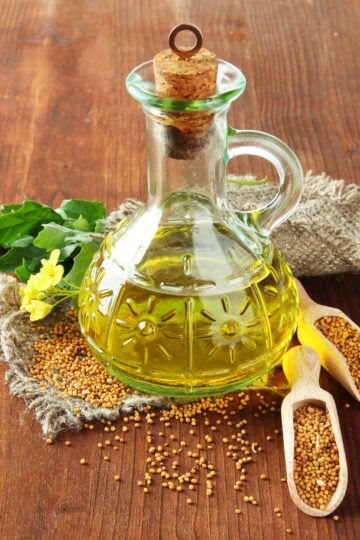
Have a question or something to share? Leave a comment below!